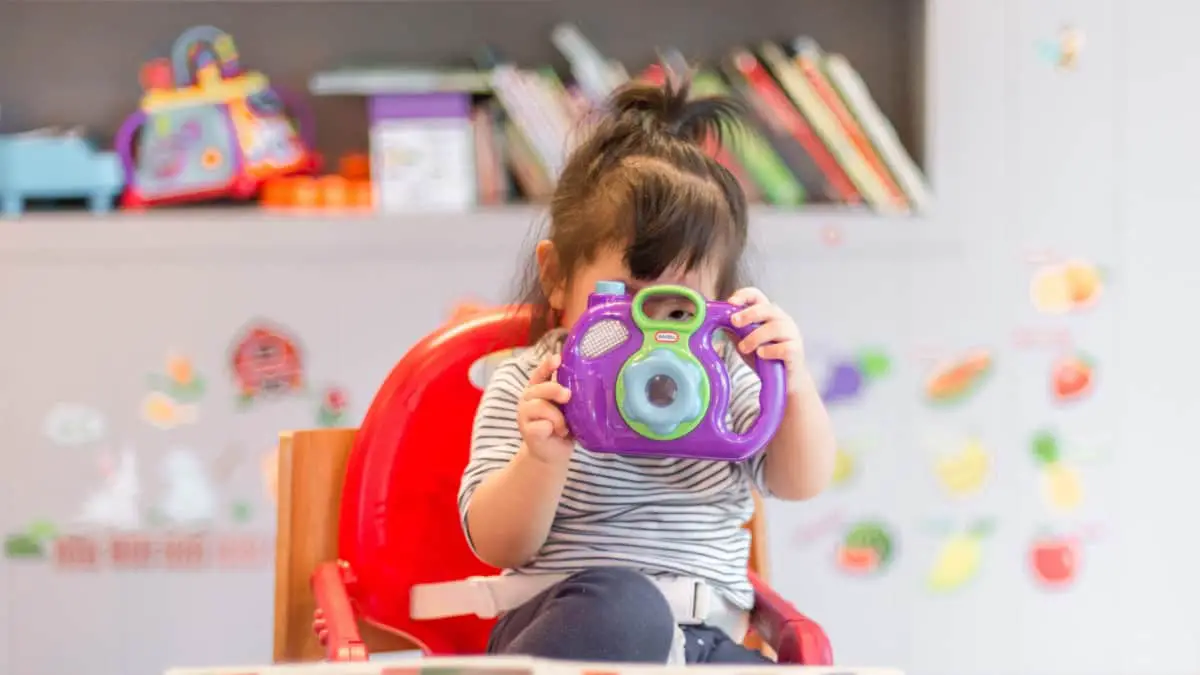Pre-K STEM Activities | Fun & Learning for Preschoolers
The great thing about Pre-K children is that they want to know about and do everything. Or is that just mine? It can feel a bit overwhelming to answer all of these questions with a curious pre-schooler around, especially if you have things to do. But this curiosity and desire to try new things are exactly the traits that a good scientist needs, and it’s a great opportunity for you to bring in STEM concepts and learning to everyday activities and play with your young child.
Kids are natural scientists – use their innate curiosity about their world to incorporate STEM learning into your everyday activities.
I think one of the most important things that parents and educators can do in developing STEM skills with their young children is to encourage and support that curiosity, even when it may not be convenient for you. By asking questions, trying new things – measuring the flour, watering the plants, or investigating the insects on the window – your child is learning about their world and developing a huge range of physical and cognitive skills. Best of all, they are learning STEM concepts without trying and without hesitation.
Related post: Ultimate Boredom Buster: 101 Things to Do When Kids Are Bored
Follow Their Lead, Bring it to Everyday Activities
An incredibly effective STEM activity to do with your Pre-K child is to follow their lead and their curiosity. Chances are good that your preschooler is interested in STEM all on their own – maybe they like counting, love dinosaurs or fire engines, take outrageous pleasure in knocking down towers, or have an unlooked-for love of insects. Whatever it is, using their natural curiosity to investigate the world will make STEM learning fun and effortless.
Read Some Favorite Books
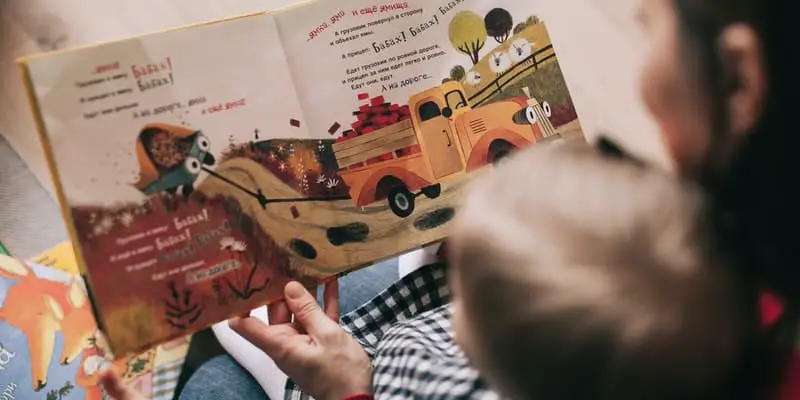
Reading is an excellent opportunity for you to introduce STEM concepts to your child. Not only is it really important for all people, scientists and engineers included, to develop strong reading and writing skills, but children’s books offer a wealth of opportunities to engage in scientific discovery. Even if the book you are reading is not at all STEM-related, chances are you can find some questions to ask, and that’s science!
Asking your child about the story or pictures is a really important way to develop critical thinking and reading comprehension skills, so this is a really rich and beneficial educational activity. Some example questions to ask your child that support STEM learning, no matter the subject, are:
- Count an object on the page – my daughter has a story about a baby lion and I ask her to help me point out and count the number of beetles on one of the pages; she loves it, and it covers some obvious math (counting), and less obvious (grouping and identifying).
- Compare and contrast – a really important mathematical concept is understanding things that are alike and different (eg. color, shape, size, etc.) Ask your child about these objects – are they the same or different?
- Investigate the environment – are there houses, trees, rocks, or cars? Is the fire engine navigating the road safely? What grows on that tree? Ask if they look realistic and, if not, talk about why.
- Answer your child’s questions – if your pre-schooler is like mine, they ask a lot of questions: what is that monkey doing, where are they going, why is that happening? Use that as an opportunity to discuss the story, the biology, the math, or the physics that underlie the question. If you don’t know the answer, be honest. Tell them you will look up the answer and, if possible, do it together!
Nature Walk
A really exceptional way to teach kids about nature and science is by observing the natural world. Chances are good that your child already notices things in their world that are alive, moving, or growing.
Help them learn more by talking about what they are, why they are here, and where they came from. Look up the kinds of birds and bugs that you find around your house together and find out what kind of trees, grass, and flowers grow near you. Talk about what you see when you are outside, and take the time to stop while driving (wherever safe if possible) to look at a bird or a deer that you see. You might be surprised about what you’ll learn along the way.
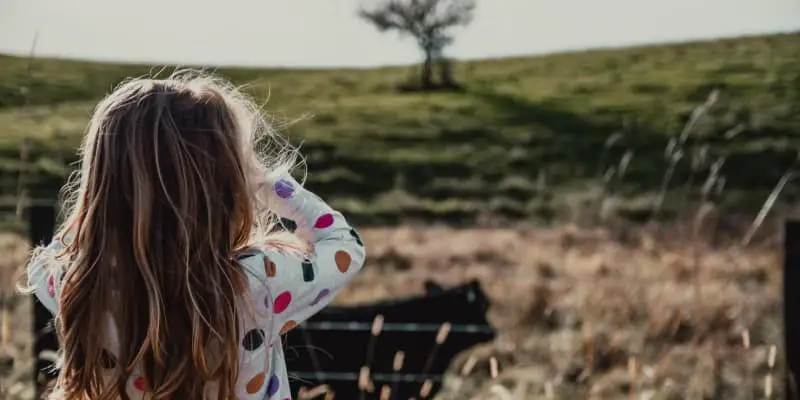
To take it a step further, you can create structured activities for observing nature. One of my favorites is nature bingo: make a grid/list of items to find (using words and/or pictures in a grid format on a sheet of paper), go for a walk, and have your child find each item. Make it extra fun by checking off items with stickers. This activity can be easily adjusted for older and younger kids, and for indoor or outdoor activity.
Make sure you include things that your child can find with an appropriate level of effort. For older children, more subtle finds will be fun, while for younger kids, make it obvious! I first described this activity in our Ultimate Boredom Buster article, I love it so much that I wanted to take a deeper dive into this post! Here are some ideas for things to search for:
Outside:
- Sky
- Clouds
- Tree
- Flower (pick one or more colors if you’ve got options)
- Flying insect
- Walking insect
- Bird (if there are a lot, identify large, small, brown, black, blue, etc.)
- Rock
- Squirrel
- Anything that you are likely to see in your area!
Inside:
- A potted plant (if you have several, identify a large leaf, a spiky leaf, short, tall, etc.)
- Flying insect
- Walking insect
- Shell
- Something made from wood
- Something made from cloth
- A view from a specific window
- A type of fruit
- A nut (if you have nuts around)
- Anything that you could identify as having been outside (food, plants, natural materials)
Bake or Cook
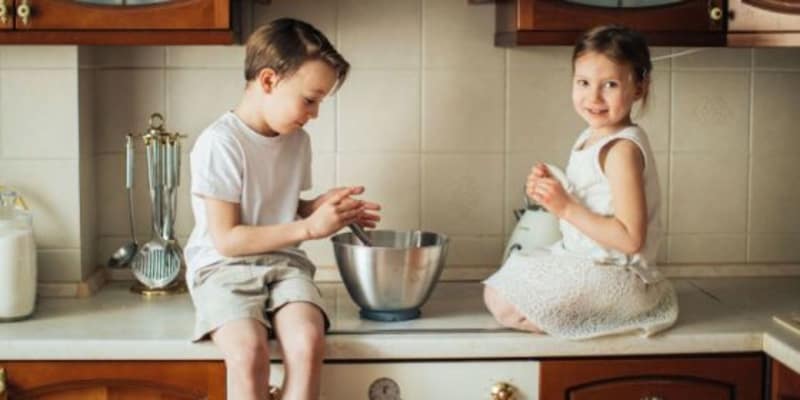
Baking and cooking are excellent, real-world examples of chemistry in action. Adding heat to food changes its chemical structure, making it easier for us to digest and, very often, taste better.
In early 2020, many of us found ourselves at home a lot more than usual and are most likely cooking frequently. Invite your child to join you in the kitchen (or don’t kick them out when they ask) to observe and participate as appropriate in the cooking process.
Even if you don’t know the specific chemistry, you can still discuss and demonstrate a lot of the key concepts in a way that your Pre-K child can easily understand. Here are a few observations and explanations to start with:
- Boiling water – when we add heat to a liquid, the molecules move around (heat is energy and the water wants to move!). As it gets hotter, bubbles form and water becomes steam, which is water in its gas phase.
- Making something new – one of the most important things we do when cooking is combine different ingredients to make something new: eggs, flour, water, and sugar become pancakes or waffles; beans, broth, rice, and vegetables become soup. Talk about the ingredients you are using to make a meal and how individual foods taste different by themselves than when they are combined together.
- Cooking changes flavor – as adults, we take it as given that cooking (most of the time) improves the flavor of food, in addition to making it more digestible. But young children don’t always know this: talk about how adding heat to food changes the texture and flavor, and makes it more fun to eat and taste better! They can taste the before and after to really bring this one home.
Simple Activities to Spark Interest
I’m a huge fan of the activities that bring STEM into everyday life, without your child (and maybe even sometimes you!) knowing. But, it’s also really great to have some specific activities you can do. So here are some fun activities that combine a little bit of crafting with STEM learning!
Build a Race Course
Kids like building things and most have cars, trucks, planes, or other toys that roll. A great way to dive into engineering and physics learning is to build a ramp, track, or course for your child’s rolling toys.
There are a lot of really great and elaborate homemade race tracks out there. If this is a hit in your home, I encourage you to do some web research to get inspired to create something more complicated. It could be as simple as taking a piece of cardboard or wood and placing it in like a ramp over stairs, against a wall, or off a piece of furniture.
You could also follow this very simple building instruction to build a two-lane ramp with cardboard and a dowel.
Once you have your ramp, you can race things down to learn about how size, weight, friction, and angle affect how fast the objects go, how far they can get, and whether they stay wheels down or flip over. As an added bonus, when your child helps build the track, they will learn to measure, attach, and assemble a simple structure, which is both exciting and fun for little ones!
Water Cycle in a Bag
The water cycle is a fundamental concept in environmental science, and it happens to overlap nicely with the Law of Conservation of Matter. The Earth has a finite amount of water that cycles from clouds to rain to rivers and oceans before evaporating back into clouds. You can create a simple, visual demonstration of this cycle using a plastic baggie, water, a pen (optional), and food coloring (optional).
Take a plastic baggie and draw a sun, cloud, and water on it to help illustrate the parts of the water cycle. Pour some water into the baggie (this post recommends ¼ cup). The important thing is not to add too much water, or there won’t be room for evaporation and condensation. At this point, add a few drops of blue food coloring if desired. Close the baggie and tape it to a sunny window!
Your child can then make observations throughout the day to see how sunlight heats up the water and makes it evaporate or condense onto the bag (imitating clouds). As well as when there is too much water for the “clouds” to hold it, the water will fall again to the bottom like rain.
Do Oil and Water Mix?
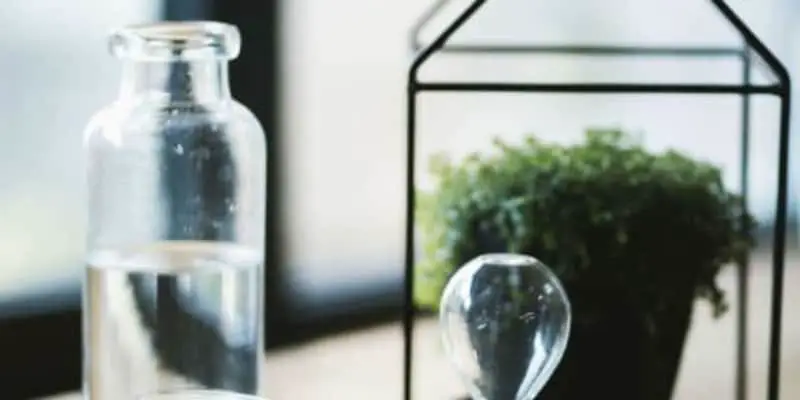
The classic adage that oil and water do not mix is also an illustrative example of chemistry. Because water has a slight polarity (electric charge), and oil does not (it’s fat), they do not readily mix on their own.
This is a really simple activity that can get your child involved, and I like that it has a lot of opportunities to expand STEM learning with add-ons and other discussions. For example, soap cleans up oil because part of the molecule is polarized and part is not, it ‘grabs’ the oil and dissolves in water, carrying it away. Oil from oil spills floats on water and clings to bird feathers and plants, making it difficult to clean up.
For a simple project, collect a jar with a lid, some oil, water, food coloring (optional), and egg yolk (also optional, mustard can be a good substitute). Fill the jar part-way with water (you can color the water with food coloring if you like), and the rest of the way with oil. Put on the lid and have your child shake the jar. You can then ask questions like: do the oil and water mix? Do they separate again? Where is the oil (hint water will be on the bottom and oil on top: oil is less dense than water)?
Talk about density and chemistry to understand why and how this happens. Next, add an emulsifier like an egg yolk or some mustard and shake again. Now, do the oil and water mix? Do they stay mixed? You can use different sized jars, different ratios of oil and water, and expose your mixture to different temperatures to learn about how these things affect the reaction.
If your child enjoys this and has more questions, this example of cleaning up an oil spill could be a good start at a broader exploration.
Frequently Asked Questions
How can I get my Pre-K child involved in STEM activities when I don’t have time or don’t know what to do?
One really convenient option is to purchase a STEM box subscription from a service like KiwiCo. They have kits with age-appropriate activities, including STEM-specific kits. There are also plenty of other options in our guide to the best STEM subscription box for kids. Another option is to check out our post, Ultimate Boredom Buster: 101 Things to Do When Kids Are Bored, which has additional ideas categorized by age, many of which are simple and use materials you have at home!
What types of activities are appropriate for pre-K?
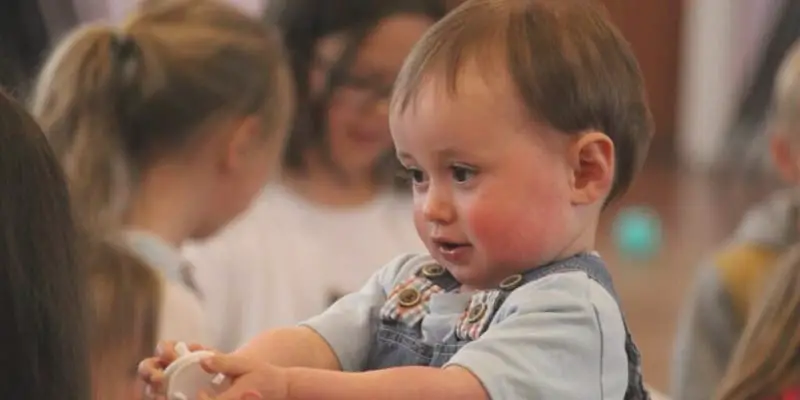
Honestly, any topic that interests them is worth engaging in, but the most fun will be those that your child can easily see and understand. So things that are visually appealing, part of daily life, or easy to observe outside are great places to start.
What if I don’t know the answer?
Look it up! This is a great opportunity to illustrate learning and investigation to your child. When you are honest about what you do and don’t know, your child learns that is OK to not know something, and how to go about finding the answer – great skills for future school and real life.
How long should an activity be for pre-K?
If you have a preschooler you know that their attention spans aren’t always very long. But when they really like something, sometimes a young child might last a bit longer. So having activities that can scale up is a good approach: start short and simple, and keep going if your child has more questions!

